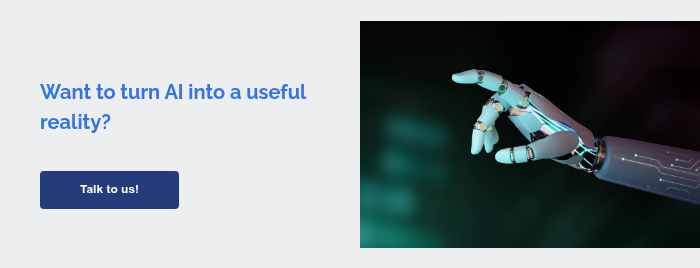What does it really mean to make AI useful to the business?
AI has become the headline act. Yet, for many companies, there remains the question – how do we make AI useful?
Answering this question should be the lens companies use to evaluate AI work across sectors, because usefulness isn’t just about implementation, it’s about purpose, relevance and value. This article explores what useful AI really looks like, drawing on live engagements and real use cases across industries.
What you will discover:
- What does it mean to make AI useful in a business setting?
- Why are relevance and use case designs more important than hype?
- How should AI engagements prioritize speed over value?
- What Vision AI reveals about deploying models with measurable outcomes
- How to move from an AI pilot to AI impact
What does useful AI mean?
The simple answer is…value. Usefulness is defined by what AI changes for users, teams or business processes. Can they decide faster? Serve better? Reduce waste? Avoid risk? If the answer is yes, then AI is useful.
Framing AI implementations in this light is the best way for companies to move from a theoretical idea of how AI can deliver value to actual results. It also repositions AI as a business tool and not another technology novelty.
Why does specificity matter more than scale?
Broad goals lead to broad results. Useful AI starts with a clearly defined, narrowly scoped problem because that ensures the technology’s implementation is razor sharp and relevant. For example, in call center analytics, ask how the technology can help managers spot failing interactions before customers churn, instead of asking how AI can be used in customer service.
This level of specificity allows you to build a solution that enables targeted models, faster deployment, and measurable success. When implementation relies on specificity, it makes it easier to measure results and fine-tune to achieve them.
Vision AI: An example of AI with purpose.
One of the most direct expressions of useful AI is Vision AI, a Mint solution designed to extract actionable information from unstructured visual content.
In healthcare, that means reading handwritten notes from clinical records to create structured summaries. In education, it translates into digitizing and interpreting paper-based assessments. In agriculture, it becomes the ability to scan field reports or input sheets to capture trends.
All these examples highlight how an AI-enabled tool can solve a real-world problem with real data inside an environment where impact can be measured. They also highlight how it is possible to move from an AI pilot to business value quickly, proving that AI implementation isn’t a mysterious art; it just means designing outcomes from the outset.
Achieving this asks that you:
- Align with business owners who feel the pain of current processes.
- Scope use cases that have a defined success metric.
- Design lightweight, explainable models that work with current data.
- Deliver in small iterations and refine based on feedback.
This smart way of moving forward with AI allows you to prove value with each cycle and build confidence in the potential of AI, which is critical for broader adoption.
What’s the risk of not defining usefulness?
Wasted time, stalled projects, frustrated teams, and AI fatigue.
Without a focus on usefulness, businesses end up with models that sit on shelves or dashboards and never get used. Worse, they make decisions without context because the AI hasn’t been trained to solve for specific problems.
Every successful AI deployment starts by answering the very simple question: What is this for? When the answer is specific, measurable and aligned to your business reality, then your AI deployment delivers action.


